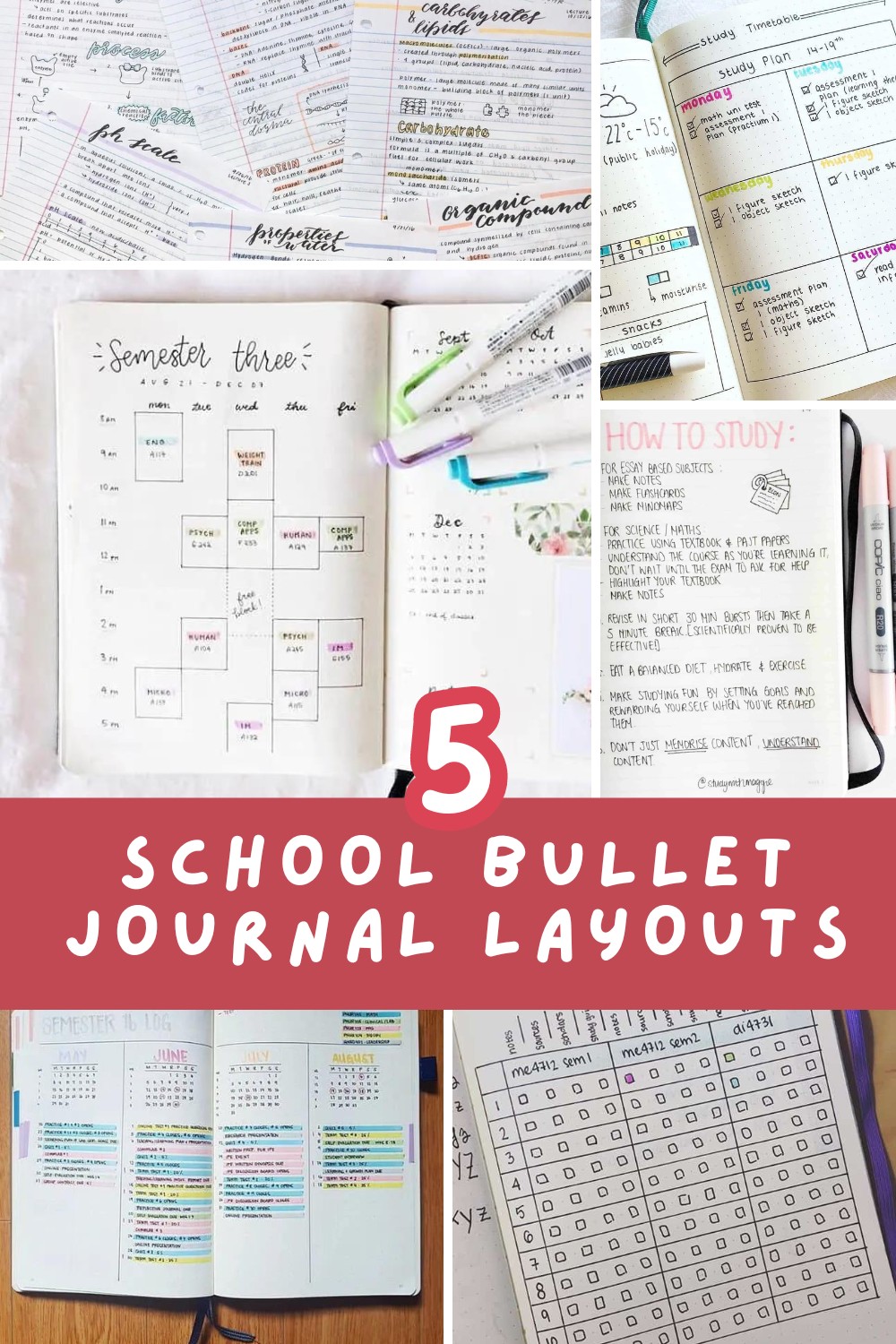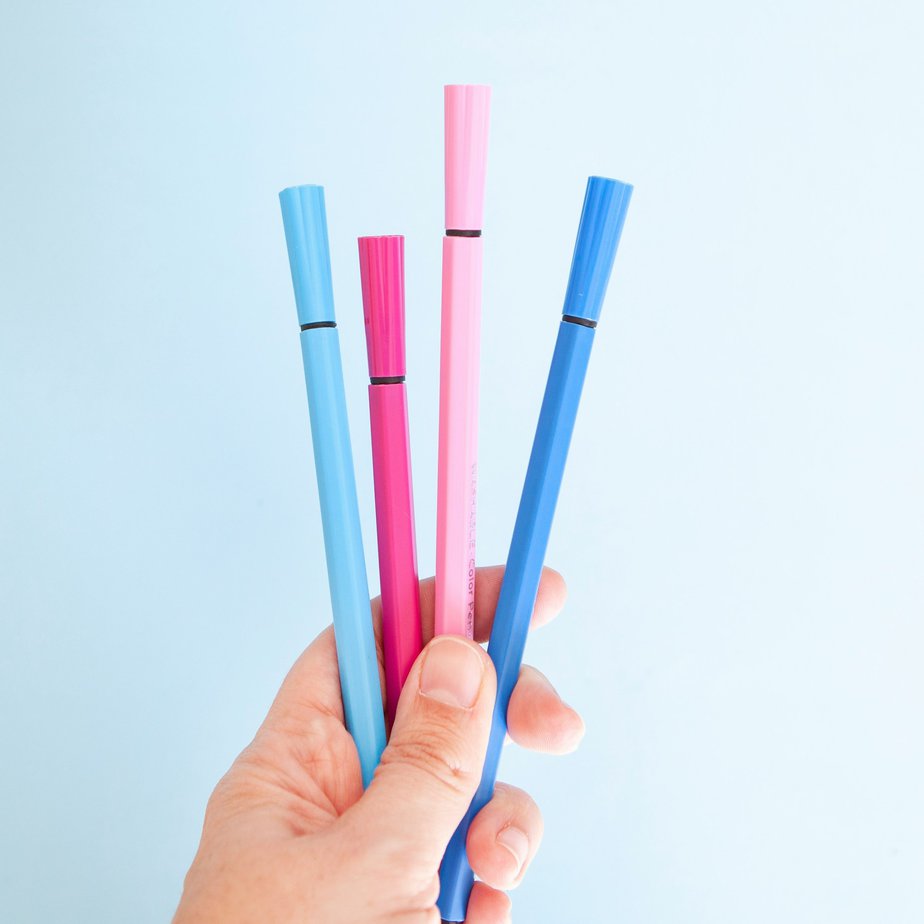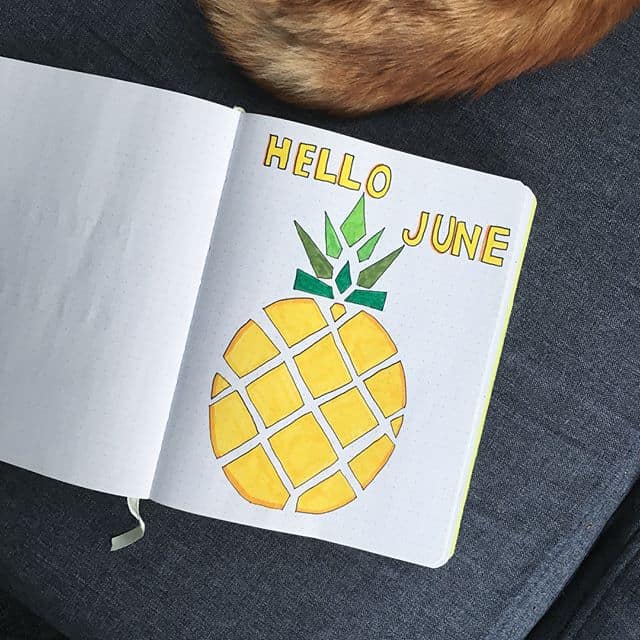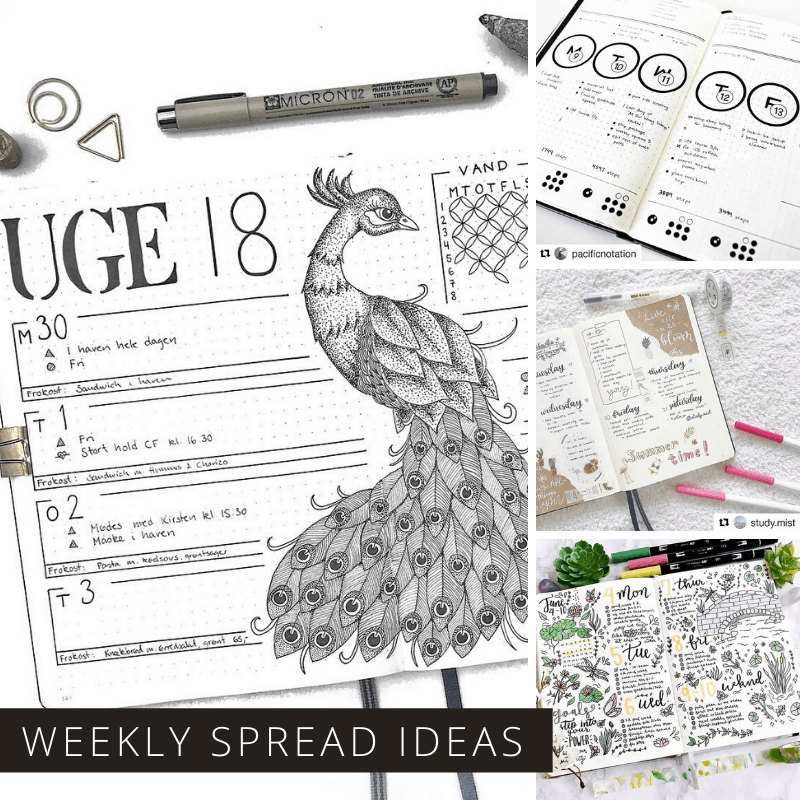The content on this site may include affiliate links. As an Amazon Associate I earn from qualifying purchases. This means that, at zero cost to you, we will earn an affiliate commission if you click on one of the links and buy something.
Looking for effective ways to stay organized and productive as a student? Check out our comprehensive guide to bullet journaling ideas for students!
From academic and habit trackers to productivity tools, we’ll show you how to create a personalized system and stay on top of your workload with these bullet journaling tips and tricks for students.
Bullet Journaling Ideas for Students
Are you a student struggling to stay organized and on top of your workload? Have you heard of bullet journaling but aren’t sure where to start? Look no further! In this post, we’ll discuss some bullet journaling ideas for students to help you stay on track and make the most of your time.
What is bullet journaling?

Bullet journaling is a customizable organizational system that can help you keep track of your to-do lists, goals, habits, and more.
It’s a simple yet effective way to stay organized and focused, especially when you have a lot on your plate.
The best part?
You can tailor your bullet journal to suit your unique needs and preferences.
Benefits of bullet journaling for students
As a student, you have a lot going on.
Between classes, assignments, extracurricular activities, and socializing, it can be easy to get overwhelmed and lose track of things.
That’s where bullet journaling comes in.
Here are some benefits of bullet journaling for students:
- It helps you stay organized and on top of your workload,
- It provides a space for you to set and track your goals,
- It encourages you to develop good habits like studying regularly or staying hydrated,
- It reduces stress and anxiety by giving you control over your life,
- It can be a fun and creative outlet.
Getting started with bullet journaling

Before diving into bullet journaling ideas for students, let’s talk about getting started.
Here are some things you’ll need to get started:
- A notebook or journal
- Pens, markers, or other writing utensils
- A ruler (optional)
- Stickers, washi tape, or other decorative items (optional)
Once you have your materials, it’s time to set up your bullet journal.
Readers often ask: “what is the best bullet journal notebook?” You can use any notebook or journal, even a cheap composition notebook, but popular options include the Leuchtturm1917, the Moleskine, and the Scribbles That Matter.
As you set up your journal, number the pages and create an index or table of contents at the front of the journal. This will make it easy to find what you’re looking for later.
Tips for beginners
If you’re new to bullet journaling (bujo), don’t worry! Here are some tips to help you get started:
- Start simple. You don’t need to create elaborate spreads or designs right away. Start with a basic daily log (aka to-do list) or weekly schedule and build from there.
- Be consistent. Try to use your bullet journal every day. This will help you develop good habits and benefit from your journal the most.
- Don’t be afraid to make mistakes. Your bullet journal is for you, so don’t worry about perfecting it. Embrace the imperfections and have fun!
- Experiment with different layouts and designs. Bullet journaling is all about customization and creative ideas, so feel free to try different layouts, colors, and designs until you find what works best for you. You might even want to doodle or practice calligraphy in your journal!
Ace your classes with these bullet journal page ideas

Now that you know the basics of bullet journaling, let’s dive into some bullet journal ideas specifically for students.
A student bullet journal is as helpful for high school students as for a college student. Think of it as a calendar or a planner but with more flexibility.
Here are some school bullet journal layouts and trackers that can help you stay on top of your academic and personal life:
Daily/Weekly/Monthly spreads
- Daily to-do list: Use a daily spread in your student bullet journal to list your tasks and assignments for the day.
- Weekly spreads: Use a weekly layout to plan your time, including a class schedule, study timetable, and other commitments.
- Monthly goals: Use this spread to set goals for the month, such as getting a certain grade on a test or completing a big project. You can then track your progress on the same page.
Academic trackers
- Assignment tracker: Use this spread to keep track of your upcoming assignments, including due dates and the status of each assignment (for example, whether it’s completed, in progress, or not started yet).
- Exam tracker: Use this spread during exam time to keep track of your upcoming exams, including the date, time, and subject.
- Grade tracker: Use this spread to keep track of your grades throughout the semester. You can record your grades for each assignment or exam and calculate your overall grade for the class.
Habit trackers
- Exercise tracker: Create a spread to track your exercise habits, whether that’s going to the gym, taking a yoga class, or going for a run.
- Water intake tracker: Use this spread to track your daily water intake and make sure you stay hydrated.
- Sleep tracker: Use this spread to track your sleep habits and make sure you get enough rest each night.
- Gratitude tracker: Write down what you are grateful for daily to help you stay positive and motivated.
- Mood tracker: Break out the colored pencils and track your mood and plan more self-care if needed.
Productivity tools
- Brainstorming pages: Use these pages to brainstorm ideas for projects, essays, or other assignments.
- Goal-setting pages: Use these spreads to set and track your long-term goals, such as getting accepted into a certain program or landing your dream job.
- Brain dump page: Set aside a page to empty your brain of everything you need to do, and then record those things in the right spot in your bullet journal so you don’t forget.
Tips for using your bullet journal effectively

Now that you have some ideas for your bullet journal, here are some tips to help you use it effectively:
- Stay organized: Keep your bullet journal organized by using page dividers or color-coding your entries. This will make it easy to find what you’re looking for.
- Avoid burnout: You don’t need to fill every bullet journal page. Take breaks when you need to, and don’t overcommit yourself.
- Make time for journaling: Set aside time each day or each week to work on your bullet journal. This will help you stay consistent and make the most of your journal.
- Create a personalized system: Remember that your bullet journal is for you, so don’t be afraid to experiment with different layouts and designs until you find what works best for you.
Conclusion
In conclusion, bullet journaling can be a valuable tool for students looking to stay organized and on top of their workload.
By using spreads and trackers like those mentioned above, you can track your academic progress, develop good habits, and stay focused and productive.
Remember to keep your bullet journal personalized and experiment with different layouts and designs until you find what works best.
Check out our Pinterest board: Bullet Journal Ideas for Beginners, for more inspiration.
Happy journaling!
More bullet journaling ideas and resources
- Creative school bullet journal layouts
- How to set up your bullet journal
- 50+ Bullet journal printables







